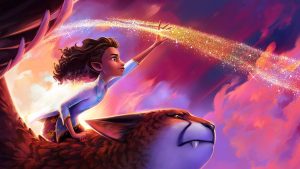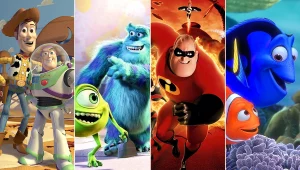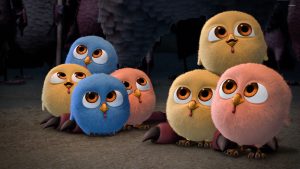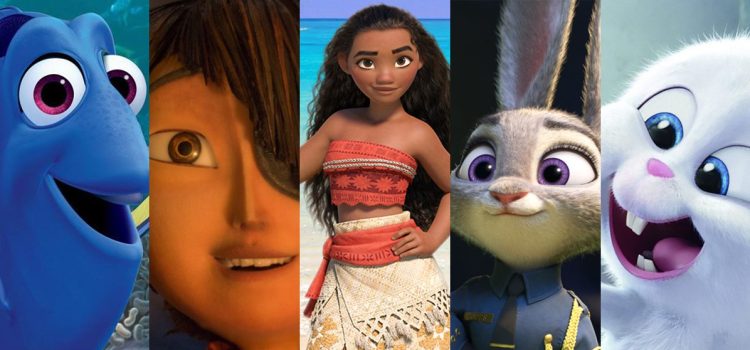
Introduction
The animation industry has always been a dynamic field, continuously evolving with technological advancements and changing audience preferences. As we look towards 2024, several key trends and innovations are poised to shape the future of animation. This article delves into the most significant animation trends, offering insights into how they will impact the industry and what we can expect in the coming years.
Real-Time Animation

One of the most groundbreaking trends in animation is the rise of real-time animation. This technology allows animators to create and modify animations instantaneously, significantly reducing production times. Real-time animation is powered by advanced game engines like Unreal Engine and Unity, which offer high-quality rendering and real-time feedback.
Real-time animation is not only transforming the production process but also opening new avenues for interactive storytelling. For instance, virtual reality (VR) and augmented reality (AR) experiences are becoming more immersive, thanks to real-time animation. This trend is expected to continue growing, with more studios adopting real-time tools to enhance their creative workflows.
Artificial Intelligence and Machine Learning

Artificial intelligence (AI) and machine learning (ML) are revolutionizing the animation industry. These technologies are being used to automate repetitive tasks, such as in-betweening and rigging, allowing animators to focus on more creative aspects of their work. AI-driven tools can also generate realistic character movements and facial expressions, making animations more lifelike.
Moreover, AI is enabling personalized content creation. By analyzing viewer preferences and behavior, AI algorithms can tailor animations to individual tastes, creating a more engaging and customized viewing experience. This trend is likely to gain momentum, with AI becoming an integral part of the animation production pipeline.
3D Printing and Physical Animation

While digital animation continues to dominate, there is a growing interest in blending digital and physical techniques. 3D printing is being used to create physical models of animated characters and props, which can then be animated using stop-motion techniques. This hybrid approach offers a unique aesthetic, combining the tactile quality of physical models with the flexibility of digital animation.
In 2024, we can expect to see more studios experimenting with 3D printing and physical animation, pushing the boundaries of traditional animation methods. This trend is also likely to inspire new forms of artistic expression, as animators explore the possibilities of combining digital and physical media.
Virtual Production

Virtual production is another trend that is gaining traction in the animation industry. This technique involves using virtual sets and environments to create animated scenes, allowing filmmakers to visualize and adjust scenes in real-time. Virtual production is particularly useful for complex shots that require precise coordination between animation and live-action elements.
The use of virtual production is expected to increase in 2024, as more studios invest in virtual production stages and tools. This trend is also likely to drive innovation in the animation industry, as animators and filmmakers explore new ways to integrate virtual and physical elements in their projects.
Diversity and Inclusion in Animation

The push for diversity and inclusion is reshaping the animation industry. There is a growing demand for stories that reflect diverse perspectives and experiences, and studios are responding by creating more inclusive content. This trend is evident in the increasing number of animated films and series featuring characters from diverse backgrounds and cultures.
In 2024, we can expect to see more efforts to promote diversity and inclusion in animation, both on-screen and behind the scenes. This includes hiring more diverse talent, supporting underrepresented voices, and creating content that resonates with a global audience.
Sustainable Animation Practices
Sustainability is becoming a key consideration in the animation industry. Studios are adopting eco-friendly practices to reduce their environmental impact, such as using energy-efficient rendering farms and minimizing waste in production processes. Additionally, there is a growing interest in creating content that raises awareness about environmental issues.
As the animation industry continues to grow, the focus on sustainability is expected to intensify. In 2024, we can anticipate more studios implementing green initiatives and exploring innovative ways to create sustainable animations.
Streaming and On-Demand Content

The rise of streaming platforms has transformed the way audiences consume animated content. With the increasing popularity of on-demand viewing, there is a growing demand for high-quality, original animated content. Streaming services are investing heavily in animation, commissioning new series and films to attract subscribers.
This trend is likely to continue in 2024, with more studios producing content specifically for streaming platforms. The competition among streaming services is also driving innovation, as they seek to differentiate themselves with unique and compelling animated offerings.
Advances in Animation Software

Animation software is continually evolving, offering new tools and features that enhance the creative process. In 2024, we can expect to see further advancements in animation software, with a focus on improving efficiency and accessibility. For example, cloud-based animation tools are becoming more prevalent, allowing animators to collaborate remotely and access powerful computing resources.
Additionally, software developers are incorporating AI and machine learning capabilities into animation tools, making it easier for animators to create complex scenes and characters. These advancements are likely to democratize animation, enabling more creators to produce high-quality content.
Conclusion
The future of animation is bright, with numerous trends and innovations set to reshape the industry in 2024. From real-time animation and AI-driven tools to virtual production and sustainable practices, these developments are driving the industry forward and opening new possibilities for creative expression. As the animation landscape continues to evolve, one thing is certain: the art of animation will continue to captivate and inspire audiences around the world.









